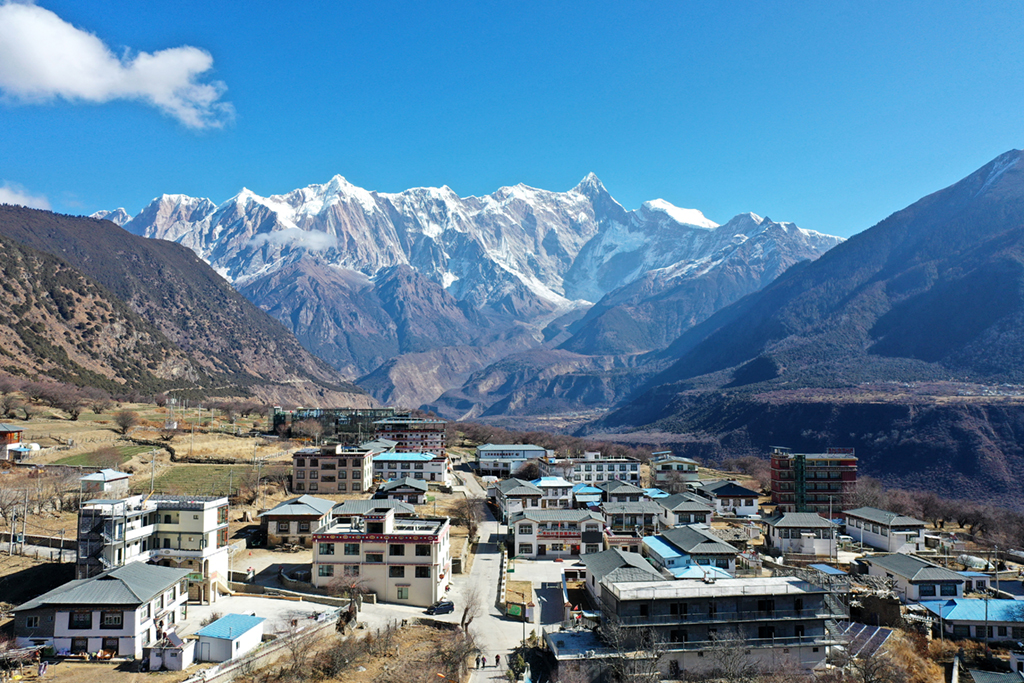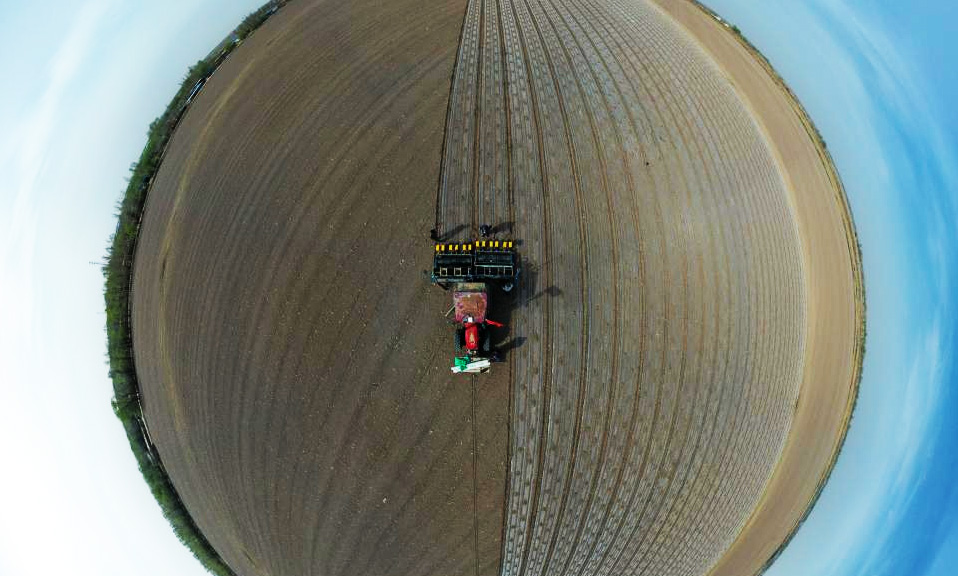Villagers in Tibet’s Nyingchi become prosperous through rural tourism
Suosong village in Mainling county, Nyingchi city, southwest China’s Tibet Autonomous Region is famous for its beautiful peach blossoms in the spring season.

Photo shows Suosong village in Mainling county, Nyingchi city, southwest China’s Tibet Autonomous Region. (Xinhua/Zhan Yan)
The village, sitting next to the clear rolling water of the Yarlung Tsangpo River, is also a perfect observation point for the snow-covered Mount Namjagbarwa.
Thanks to its unique ecological resources, such as peach blossoms, snowy mountains, and blue skies, which complement one another with a rich spectrum of colors, flocks of tourists can be seen swarming in the area as they engage in sightseeing.
“I visited the village three times in three consecutive years. I can escape the hustle and bustle of city life and capture fantastic photos here,” said Li Jianjiang, a tourist and a shutterbug from northwest’s China’s Xinjiang Uygur Autonomous Region.
The thriving tourism industry in the village has brought tangible benefits to local residents.
Lhapa, a resident in the village, has been busy answering phone calls from people asking to book rooms at the family’s homestay hotel. Lhapa’s father opened the village’s first homestay hotel in 2013, and now the hotel has 40 rooms in all for guests.
Before starting his homestay business, Lhapa’s family could earn between 20,000 yuan (about $3,056) to 30,000 yuan annually from digging cordyceps and collecting matsutake mushrooms, which were the main sources of income for the family.
After an asphalt road connecting Suosong village opened to traffic in 2016, an increasingly larger number of tourists have been drawn to the village. During the peak season, it’s not easy for tourists to get a room in the homestay hotel of Lhapa’s family.
Lhapa now rents the homestay hotel out with an annual rent income of 650,000 yuan. Besides, Lhapa earns an annual income of about 200,000 yuan by providing charter bus services for tourists. The annual income of Lhapa’s family has hit about 1 million yuan, which includes government subsidiaries and the dividends generated by the village’s scenic areas.
Suosong village is just one of several villages that are well-known for their beautiful peach blossoms, with Lhapa’s family epitomizing the Tibetan farmers and herders who have shared in the lucrative benefits from a booming domestic tourism industry.
During the 13th Five-Year Plan (2016-2020), Tibet received more than 157 million tourists and garnered nearly 213 billion yuan from tourism, which is 2.3 times and 2.4 times the number achieved during the 12th Five-Year Plan (2010-2015), respectively. The industry has proven a success in helping 75,000 registered impoverished people shake off poverty, according to the regional department of tourism development.
Photos
 World Book Day: Let's read together
World Book Day: Let's read together Rare silver pheasants flock together in greater numbers to forage at Yishan nature reserve in east China's Jiangxi
Rare silver pheasants flock together in greater numbers to forage at Yishan nature reserve in east China's Jiangxi Young artist takes up brush to create lifelike paintings expressing mankind and nature’s harmonious co-existence
Young artist takes up brush to create lifelike paintings expressing mankind and nature’s harmonious co-existence Cutton farming in full swing in China's Xinjiang
Cutton farming in full swing in China's Xinjiang
Related Stories
- Tibet embraces caterpillar fungus harvest
- Ecological resources become ‘immovable property’ guaranteeing people’s happy life in Tibet
- Children's literature in Tibetan language turns new page
- Plateau roads pave way for Tibet's rural revitalization
- Tibet prioritizes ecological protection in development
- Rural roads in Tibet exceed 90,000 km
- Tibet makes progress in prehistoric archaeology research
- Over 1.1 mln folios of ancient texts archived at Tibet's Potala Palace
- Residents pick tea leaves in Medog County, China's Tibet
- Helicopter rises on high to check power line in SW China’s Tibet
Copyright © 2022 People's Daily Online. All Rights Reserved.






